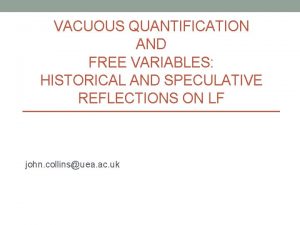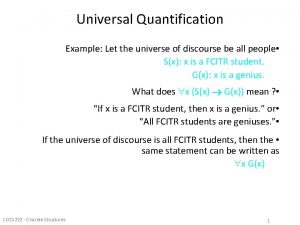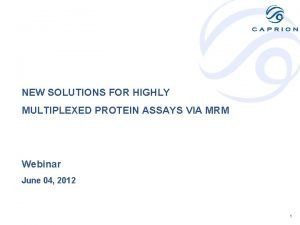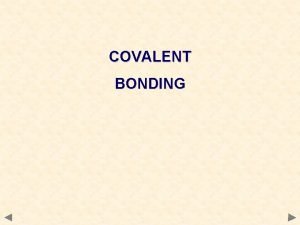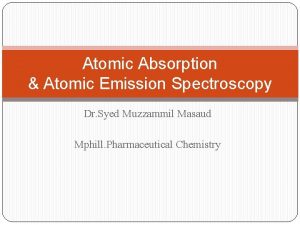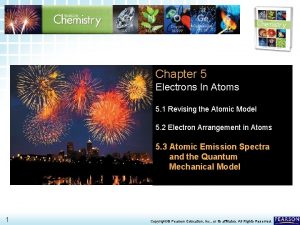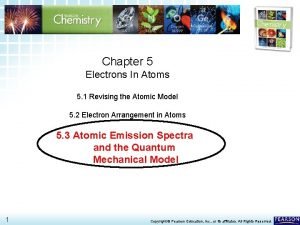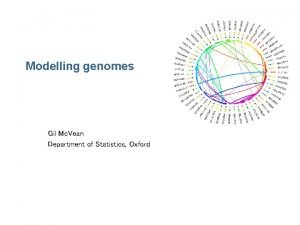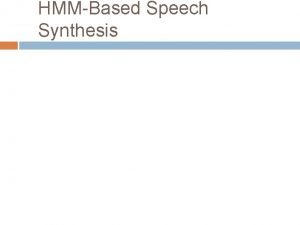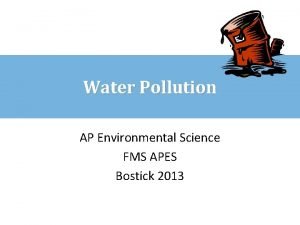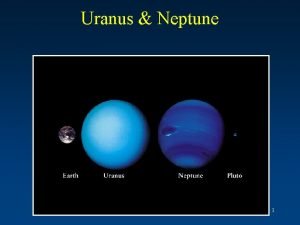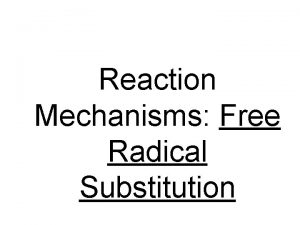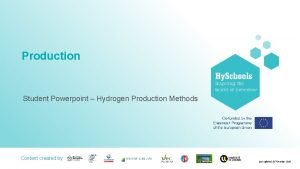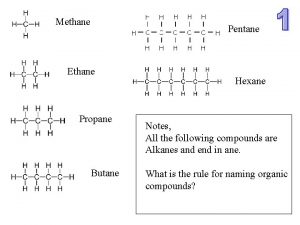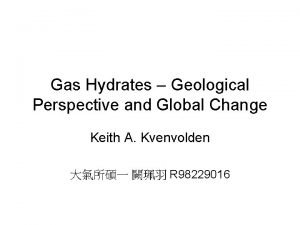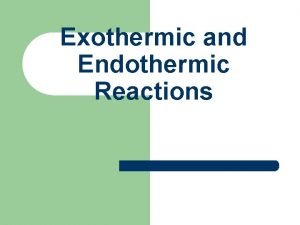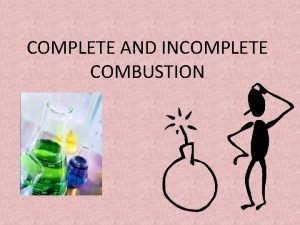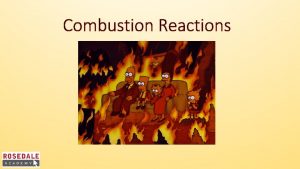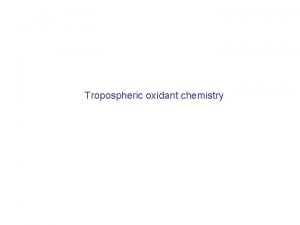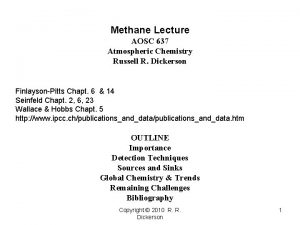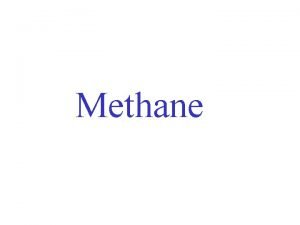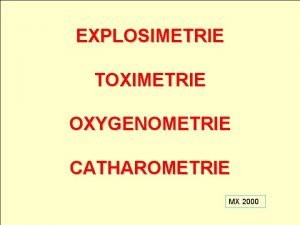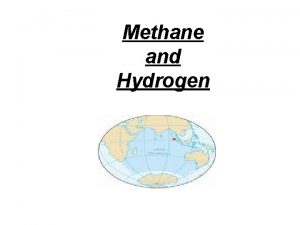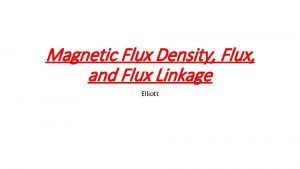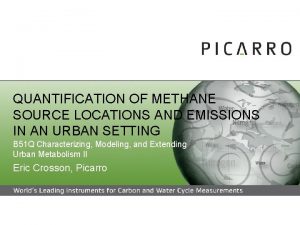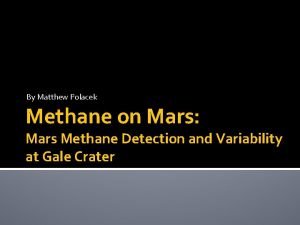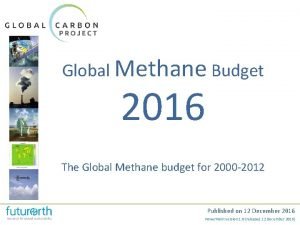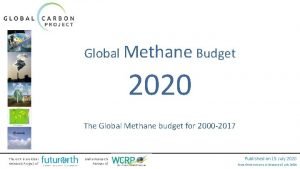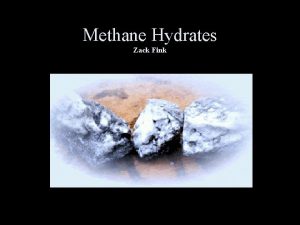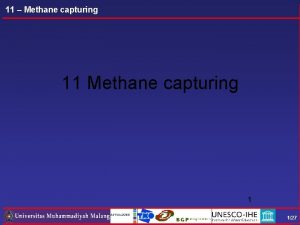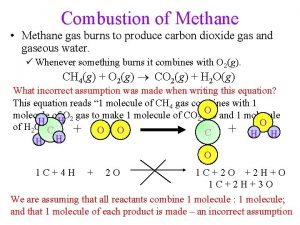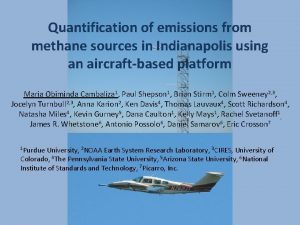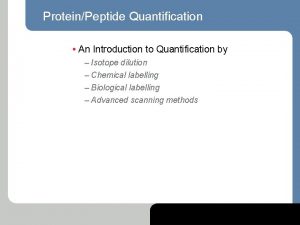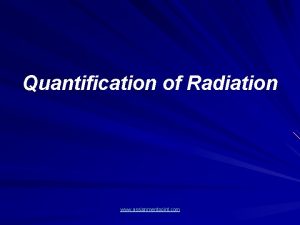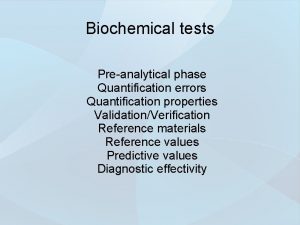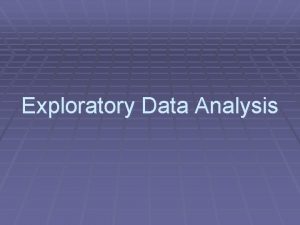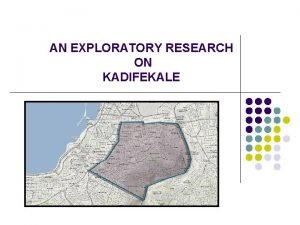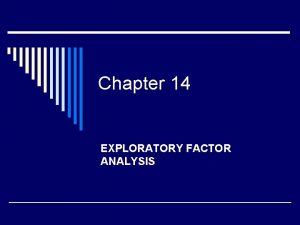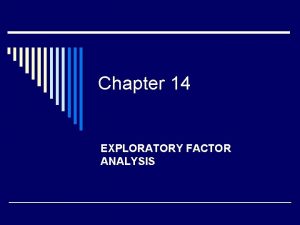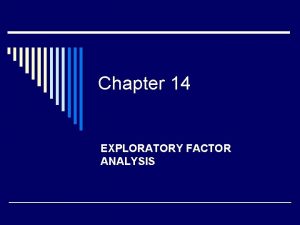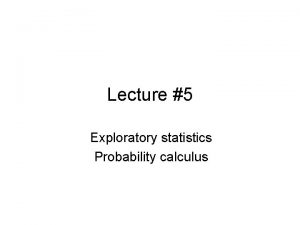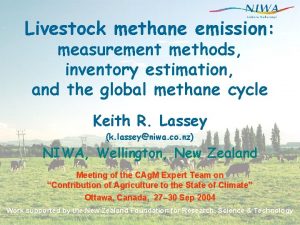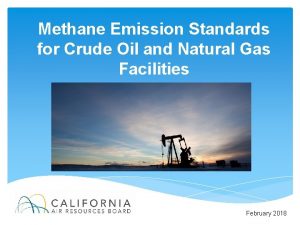Methane emission detection and flux quantification from exploratory































- Slides: 31

Methane emission detection and flux quantification from exploratory horizontal hydraulic fracturing (fracking) in the United Kingdom, using unmanned aerial vehicle (UAV) sampling Adil Shah 1, Hugo Ricketts 2, Joseph Pitt 1, Jacob Shaw 1, Khristopher Kabbabe 3, Brian Leen 4, Grant Allen 1 1: Centre for Atmospheric Science, The University of Manchester, United Kingdom 2: National Centre for Atmospheric Science, United Kingdom 3: School of Mechanical, Aerospace and Civil Engineering, The University of Manchester, United Kingdom 4: ABB – Los Gatos Research, United States of America

Navigation menu • • UAVs at Manchester UAV sampling campaigns Fracking and cattle flux results Near-field Gaussian plume inversion (NGI) flux quantification method • Testing the NGI method with UAV sampling

UAVs at Manchester

Amanda • • • Adapted for tethered sampling, using a sensor on the ground – Air inlet above the plane of the propellers to minimise downwash DJI Spreading Wings S 1000+ octocopter UAV frame 8 kg take-off mass including battery Uses a 2 kg Li-Po battery with a 1. 6 Ah capacity Eight pairs of propellers rotate 400 times per minute On-board DJI A 3 flight controller and DJI Lightbridge 2 streaming system – Capable of flying to pre-programmed waypoints On-board 5 Hz wind sensor On-board 1 Hz satellite geolocation sensor On-board temperature, pressure and humidity sensor Raspberry Pi recording computer connected to the three on-board sensors – Connected to a buzzer and LED

Smokey and Phillipa • Smokey – DJI Spreading Wings S 900 hexacopter frame – Adapted for tethered sampling • Phillipa – DJI Spreading Wings S 1000+ octocopter frame – Adapted to carry an on-board sensor

End of section • Continue to UAV sampling campaigns • Back to navigation menu

UAV sampling campaigns

Fracking sampling • • • 14 flight surveys on five sampling days between October 2018 and September 2019 downwind of the UK’s first exploratory shale fracking operation Amanda connected to a sensor on the ground (two flights per survey using waypoints) Phillipa carrying an on-board sensor (one flight per survey in course lock) 2. 7 m fixed anemometer with the wind sensor on-board Amanda used for wind velocity profiles Emissions were observed on one of the five sampling days (14 th January 2019) within a 1. 4 -hour sampling window due to cold venting of liquid unloading fluid, following a nitrogen lift Shah et al. (2020), Environ. Res. Commun. , 2, article number: 021003

Cattle sampling • 3 flight surveys in September 2017 downwind of a barn in Little Plumpton, Lancashire UK, filled with approximately 165 lactating cattle and 100 young cows • Smokey connected to a sensor on the ground (one flight per survey manually) • 2. 7 m fixed anemometer with a power law model used for wind velocity profiles • Shah et al. (2020), Environ. Res. Commun. , 2, article number: 021003

End of section • Continue to fracking and cattle flux results • Back to navigation menu

Fracking and cattle flux results

Flux density measurements

Instantaneous flux results

Outcome • UAV sampling can be used for source identification and rough flux estimation • The UK’s first exploratory fracking operation resulted in substantial instantaneous emissions at the time of sampling, due to cold venting during liquid unloading, associated with a nitrogen lift • Shah et al. (2020), Environ. Res. Commun. , 2, article number: 021003

End of section • Continue to near-field Gaussian plume inversion (NGI) flux quantification method • Back to navigation menu

Near-field Gaussian plume inversion (NGI) flux quantification method

Near-field Gaussian plume inversion (NGI) • NGI method is an adaptation of the traditional Gaussian plume model, used to model downwind dispersion • NGI method instead models turbulent variation in downwind position of the time-invariant plume • Requires two-dimensional downwind concentration measurements on a plane perpendicular to wind direction, near to source (less than 500 m away) • Shah et al. (2019), Atmosphere, 10, article number: 396

Near-field Gaussian plume inversion (NGI) – flux density (q) • Multiply concentration enhancements (over background) in kg m− 3 with mean wind speed (as a function of height (z)) to derive flux density (q) in kg s− 1 m − 2 – q is the mass of methane flowing though every square metre of the downwind perpendicular vertical plane per second

Traditional Gaussian plume model •

Near-field Gaussian plume inversion (NGI) – τy and τz • Assume size of the plume (characterised by σy and σz) to increase linearly with downwind sampling distance (x) • Define τy and τz to be constant parameters at 1 m from the source

Near-field Gaussian plume inversion (NGI) – equation •

Near-field Gaussian plume inversion (NGI) – modifications • Size of the plume in the crosswind (y) direction (characterised by τy) is derived using flux density (q) measurements rather than assumptions of atmospheric stability – The traditional assumptions are valid for plumes characterised by dispersion, rather than near-field turbulence • Size of the plume in the z direction (characterised by τz) is not calculated and is a solution of the model • An upper flux uncertainty bound is derived using a random walk simulation to quantify the potential for flux underestimation, due to sampling gaps or limited spatial sampling extent • Shah et al. (2019), Atmosphere, 10, article number: 396

Near-field Gaussian plume inversion (NGI) – application • NGI method is ideal for UAV sampling downwind of facility scale (point) source emitters of trace gases such as methane • The plume must be characterised by short-term turbulence • Shah et al. (2019), Atmosphere, 10, article number: 396

End of section • Continue to testing the NGI method with UAV sampling • Back to navigation menu

Testing the NGI method with UAV sampling

Testing the NGI method using a controlled methane release • 22 flight surveys in August and September 2016 downwind of a controlled methane release • Amanda connected to a sensor on the ground (two flights per survey using waypoints) • Phillipa carrying an on-board sensor (one flight per survey in course lock) – 3. 4 kg prototype kindly loaned to us by ABB – Los Gatos Research – Prototype samples methane with 5 ppb precision at 5 Hz • 2. 7 m fixed anemometer with the wind sensor on-board Amanda used for wind velocity profile • Shah et al. (2020), Atmos. Meas. Tech. , 13, pp. 1467 -1484

Method testing results • The controlled (known) flux rate was withheld during flux analysis • 18 of 22 flight surveys resulted in flux agreement (within uncertainty) • Large uncertainties due to limited sampling duration and near-field sampling constraints • A random walk simulation (based on sampling) was used to quantify uncertainty due to limited spatial sampling (spatial sampling gaps), resulting in asymmetric uncertainties • Shah et al. (2020), Atmos. Meas. Tech. , 13, pp. 14671484

End of section • Back to navigation menu

Summary

UAV methane flux quantification • 3 UAVs were used to sample downwind of methane emission sources using the on-board and tethered sampling approaches • 15 UAV surveys took place downwind of the UK’s first horizontal hydraulic fracturing site (on five separate days) and 3 UAV surveys took place downwind of a barn containing lactating cattle • Instantaneous hydraulic fracturing emissions (on one of five individual sample days) were one to two orders of magnitude higher than dairy farm emissions • The near-field Gaussian plume inversion (NGI) flux quantification method was used to derive fluxes, which models a time-averaged plume characterised by turbulent advection of an instantaneous time-invariant plume and allows for sampling on a slightly offset downwind plane • The NGI method was successfully tested with UAV sampling downwind of controlled methane releases

End of section • Back to navigation menu
 Magnetic permeability of materials
Magnetic permeability of materials Flux density unit
Flux density unit Vacuous quantification
Vacuous quantification Universal quantification examples
Universal quantification examples Highly multiplexed protein quantification
Highly multiplexed protein quantification Hhhnh
Hhhnh Methane and water
Methane and water Difference between absorption and emission spectrum
Difference between absorption and emission spectrum Atomic emission spectra and the quantum mechanical model
Atomic emission spectra and the quantum mechanical model Atomic emission spectra and the quantum mechanical model
Atomic emission spectra and the quantum mechanical model Matter and materials grade 12
Matter and materials grade 12 Tga vean
Tga vean Transition and emission probability
Transition and emission probability Tertiary treatment of wastewater apes
Tertiary treatment of wastewater apes Circumference of uranus in km
Circumference of uranus in km Molar volume of methane
Molar volume of methane Is methane lighter than air
Is methane lighter than air Monochloration du méthane
Monochloration du méthane Hydrogen production methods ppt
Hydrogen production methods ppt Ethane methane propane butane
Ethane methane propane butane General molecular formula of alkene
General molecular formula of alkene Butane pentane hexane
Butane pentane hexane Methane hydrate definition
Methane hydrate definition Methane oxygen endothermic or exothermic
Methane oxygen endothermic or exothermic Equation for complete combustion of propane
Equation for complete combustion of propane Combustion chemical reaction
Combustion chemical reaction Decomposition reactions
Decomposition reactions Methane oxidation
Methane oxidation Methane gas
Methane gas Methane oxidation
Methane oxidation Methane oxidation
Methane oxidation Oxygenometrie
Oxygenometrie


